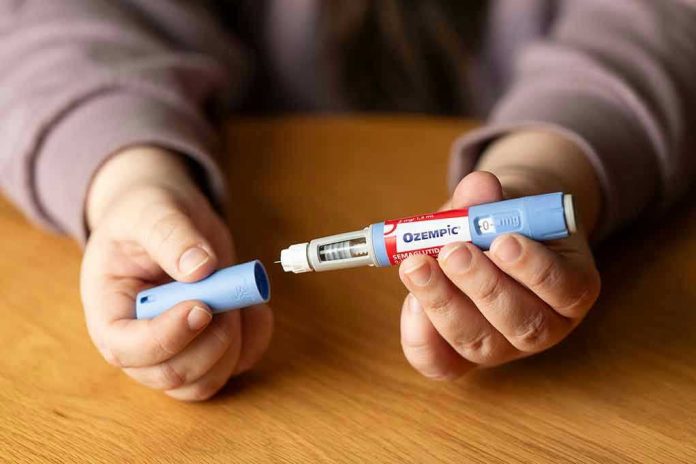
A reality TV star’s shocking admission of abusing diabetes drugs for weight loss exposes the dangerous extremes celebrities will go to meet Hollywood’s twisted beauty standards.
Story Snapshot
- Brooks Nader admitted on her reality show to abusing GLP-1 diabetes drugs for weight loss
- Her sisters discovered a basket of needles and staged a family intervention after she nearly fainted
- Nader increased her dosage specifically for a Maxim magazine shoot, citing industry pressures
- The incident highlights dangerous celebrity drug abuse driven by unrealistic body standards
Reality Show Confession Exposes Drug Abuse
Brooks Nader, a 28-year-old model and reality TV personality, publicly confessed to abusing GLP-1 weight loss drugs on episode 7 of her family’s show “Love Thy Nader.” The admission came after she nearly collapsed during an exercise class, which she directly attributed to her drug use. Nader revealed she had been “microdosing” the diabetes medication but dangerously increased her dosage in preparation for an upcoming Maxim magazine shoot, demonstrating how industry pressures drive reckless health decisions.
Family Intervention After Alarming Discovery
The model’s concerning behavior reached a breaking point when her sisters discovered a basket of needles in her possession, prompting them to stage an immediate family intervention. This discovery, combined with her fainting episode, revealed the extent of Nader’s drug abuse and the serious health risks she was taking. Her family’s intervention highlights how celebrity culture’s obsession with unrealistic body standards puts young women’s lives at risk, forcing loved ones to take desperate measures to save them from dangerous pharmaceutical abuse.
Brooks Nader's sisters discover basket of needles, stage intervention over weight loss drug abuse https://t.co/Fst9qE2NiV
— Fox News Entertainment (@FoxNewsEnt) September 3, 2025
Industry Pressures Drive Dangerous Choices
Nader’s case exposes the toxic underbelly of the modeling industry, where extreme body standards push professionals toward life-threatening behaviors. She admitted to having “an unhealthy relationship with weight and food because of the industry” while denying she has an eating disorder. The fact that she specifically increased her drug dosage for a magazine shoot demonstrates how commercial pressures override basic health concerns in Hollywood’s image-obsessed culture.
GLP-1 drugs like Ozempic and Wegovy were designed to treat type 2 diabetes, not serve as cosmetic weight loss tools for healthy individuals. Medical professionals warn that using these medications without proper supervision can cause malnutrition, fainting, and other serious side effects. Nader’s near-collapse during exercise class perfectly illustrates these dangers, yet the modeling industry’s warped priorities continue pushing young women toward such extreme measures.
Broader Implications for Conservative Values
This story represents everything wrong with modern celebrity culture and its assault on traditional family values and personal responsibility. While Nader’s sisters stepped up to protect their family member through intervention, the broader entertainment industry continues promoting dangerous behaviors that undermine health, stability, and common sense. The normalization of pharmaceutical abuse for vanity purposes reflects a society that has lost sight of genuine wellness and moral boundaries, prioritizing superficial appearance over fundamental well-being.
The incident serves as a warning about how Hollywood’s influence corrupts young people’s judgment and endangers their lives. Conservative families must remain vigilant against these toxic cultural pressures that prioritize image over health and encourage dangerous shortcuts over discipline and natural wellness approaches.
Sources:
Brooks Nader’s family intervenes over weight loss drug abuse







